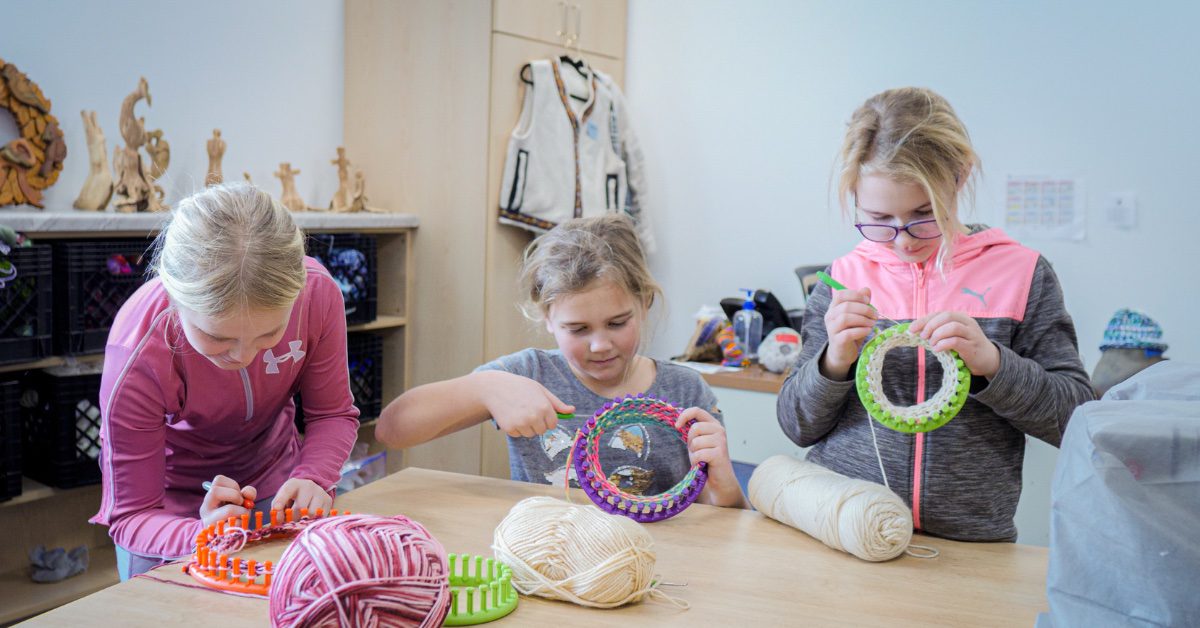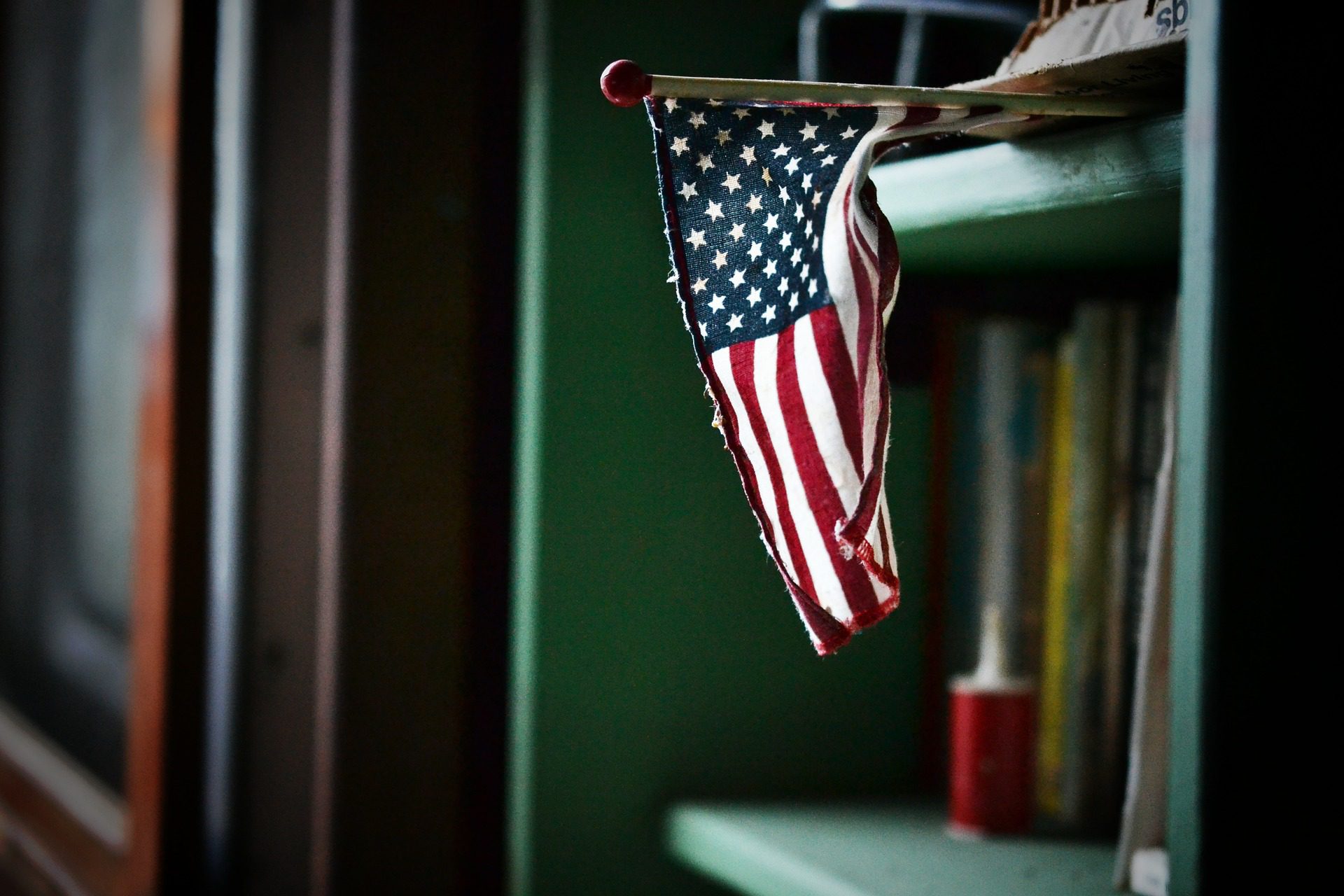The following post is based on my new YouTube video for Copper Island Academy, a Finnish-inspired school in Calumet, Michigan.
The first lesson I observed at Copper Island Academy transported me back to Finland.
I entered a classroom where I found students wielding carving knives. Heads-down, they cut delicate lines into small blocks of wood. (One student outlined a buck with massive antlers while another carved out the shape of Michigan’s Upper Peninsula.)
This kind of hands-on, real-life education is the norm in Finland. Here in America, it’s exceptional.
Copper Island Academy—a K-8 school in Calumet, Michigan—offers a studio program that draws inspiration from Finland’s woodwork and textile classrooms. (I began a paid partnership with the school earlier this year.)
“In America, we tend to think of ‘studio’ as anything about art, like a pottery studio, or a painting studio,” explained Kelly Sloan, Copper Island’s studio teacher. “But here, this class is just about anything that is hands-on.”
The hardest part about studio education, Kelly said, is probably the hands-on aspect. Some students lack fine motor control, and the class may be very frustrating—especially early on.
“It requires a lot of stick-to-itiveness,” said Kelly. (Stick-to-itiveness is “dogged perseverance,” according to Merriam-Webster.)
The Finns would call this character trait sisu, a concept celebrated at Copper Island. The word often represents Finland’s national character and derives from the Finnish word sisus (“guts”).
Cultivating Sisu
For years, I saw firsthand how many Finnish teachers develop sisu in their students, and their approach is straightforward. They give children autonomy in their learning while ensuring they have a strong foundation of knowledge and skills.
In Finland’s textile and woodwork classrooms, students have space to think critically, solve problems, and express their creativity. And as they grow in competence, they receive greater autonomy from their teachers.
Hands-on projects, like creating clothing or building a shed, can develop sisu effectively. They often challenge students like no other task at school.
Kelly Sloan told me about a new student who struggled greatly with a studio project—so much so that he wanted to give up and move on.
But Kelly encouraged him to persevere. Lesson after lesson, she kept offering him support. And finally, on the day I interviewed Kelly, her student pulled it off.
“His pride in himself was enormous,” she said, “that he had figured out something hard, and he got it done.”
Kelly has seen this pride in Copper Island’s youngest students too. Inevitably, the kindergartners glow after spending weeks completing a demanding project, such as a hat.
“They show it to everybody,” Kelly said. “They can’t believe it!”
Owning the Learning
Growing up in the U.S., I took one shop class in middle school, and the only thing I remember making was a large wooden clock.
But I wasn’t proud of it—for one simple reason. I showed up to class one day only to find that my teacher had put the finishing touches on my project.
While teaching and living in Finland, I witnessed a different educational approach (similar to what I’ve observed at Copper Island Academy).
Teachers continuously focus on cultivating student autonomy.
From showing up to class prepared to planning a handicrafts project, children in Finland know they must take responsibility for their learning.
In Helsinki, I met a teacher who requires her primary students to log into the school’s computers. It’s a practice that begins in first grade and is painstaking at first. (Using the hunt-and-peck method, first-graders can easily spend several minutes attempting to sign in.)
From a short-term perspective, this teacher’s decision is a colossal waste of time. Initially, it’s much faster for her to enter the login credentials without involving the children.
But from a long-term perspective, prioritizing student autonomy pays off.
Eventually, her students learn to log in quickly—and most importantly, they learn to take responsibility for a task they can accomplish on their own.
At Copper Island, kindergartners know they must dress themselves before heading outside. It may be a struggle early on, but with support and encouragement from their teachers, they learn to zip up their jackets and put on their mittens independently.
Starting From Scratch
Last school year, every student at Copper Island started at a similar place in the studio classroom. Skills like hammering, sewing, and knitting were utterly unfamiliar to many children.
Some Copper Island students mastered the basics last year. Others didn’t.
“But what’s so exciting,” Kelly Sloan said, “is that students from last year who struggled a lot are now getting it.”
Kelly has seen tremendous growth in these students. They are growing in confidence, becoming comfortable with the tools, and seeing their projects through to completion.
Copper Island Academy only launched during the fall of 2021, but they have already seen many encouraging results. In culinary arts—and studio class—students pick up many real-life skills while developing sisu.
This spring, I am creating a video series about Copper Island’s innovative model. Watch the latest episode to see studio education with your own eyes—and subscribe to follow the series on YouTube!
***
Tim Walker is an American teacher, writer, and speaker based in Milford, Connecticut. He is the author of Teach Like Finland: 33 Simple Strategies for Joyful Classrooms. Inspired by his work in Finnish schools, Tim speaks internationally about play, trust, and joy in education. He also writes about global educational practices at teachlands.com. Reach Tim Walker at tim (at) taughtbyfinland.com.
Follow Taught by Finland on Facebook to learn more about Finnish education.



